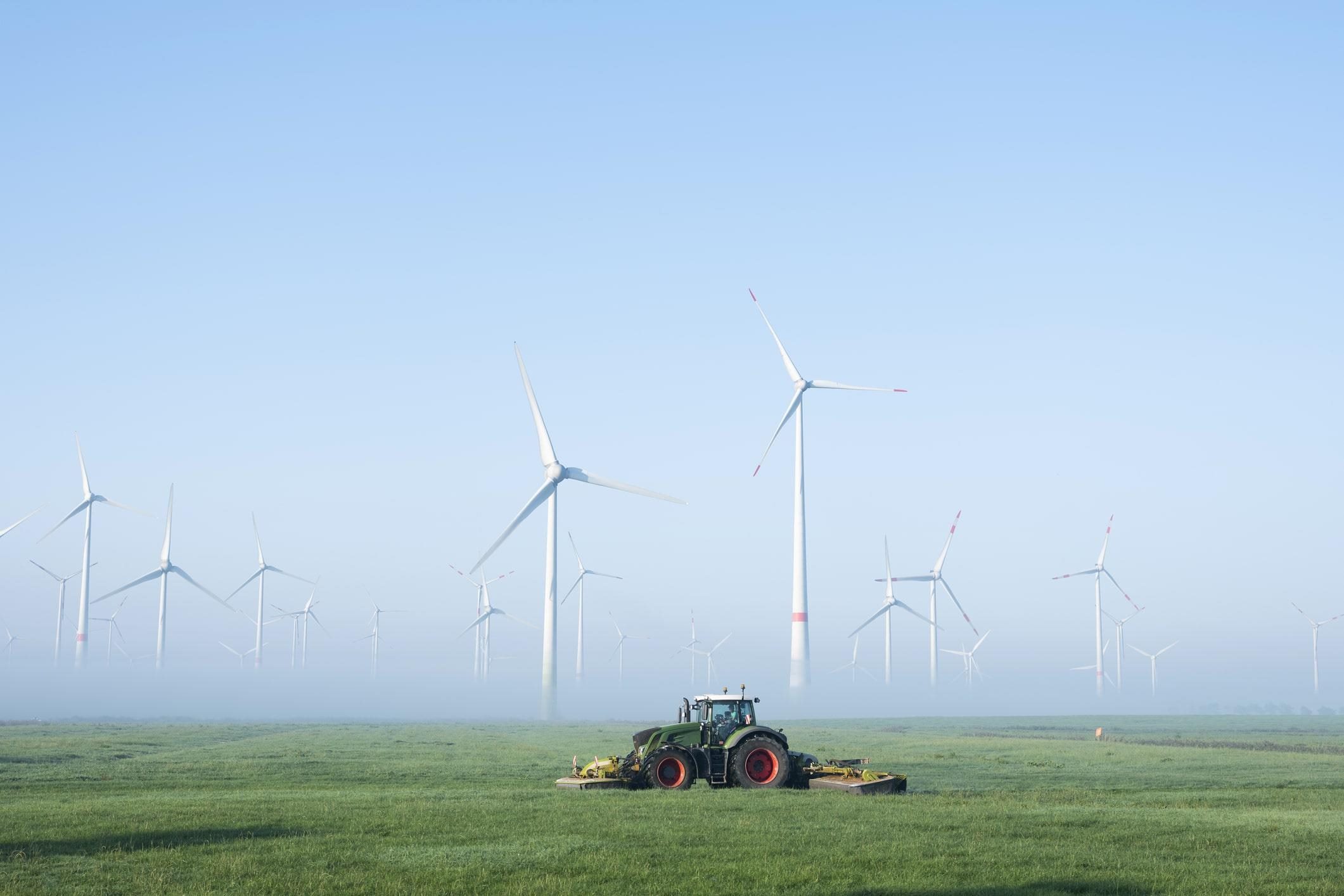Wind Energy

Wind energy consists of using the power of wind to generate electricity. Wind energy is an increasingly popular way to generate electricity and is often achieved by using multiple wind turbines near each other, in what is often referred to as a “wind farm.” Like traditional farms, wind farms can exist on vast stretches of land, but can also be set up offshore, in lakes and oceans.
Wind Turbines
A wind turbine is an industrial device that converts kinetic energy – which is energy, derived from the process of motion - in this case the wind, into mechanical energy which creates wind power. Wind turbines and windmills are terms that can be used interchangeably. However, they both conjure up different images. Windmills are often associated with Dutch windmills that were used to pump water to protect the Netherlands from sinking, since the country is partially below sea level. The windmill was also traditionally used to grind grain into flour; to power sawmills and pump water on farms, which are now considered antiques. Modern wind turbines, the industrial kind, all come in different sizes, but many existing models are over 400 feet high. Wind turbines work when wind blows through a rotor blade which turns a shaft in a generator to produce electricity. There are several main parts to a wind turbine. There is the tower, which is secured into a cement platform - there is the nacelle which is attached to the top of the tower. The nacelle comprises of the rotor gearbox and the generator; and attached to the nacelle is the rotor hub where three blades are attached. Wind turbines as we know them today cost between $1 to $2 million dollars to construct.
Advantages and Disadvantages of Wind Energy
Like most things, wind energy comes with its own pros and cons. Below are some of the advantages and disadvantages when considering wind energy.
Advantages:
• Wind is free.
• There is an unlimited supply of wind energy
• There are government subsidies available for landowners who wish to host wind energy projects.
• Land that wind turbines are erected on can still be utilized for other purposes, including agriculture.
Disadvantages:
• Wind turbines often require transmission infrastructure to be built and they also require consistent maintenance
• Some may find wind farms visually unappealing when close to residential locations.
• Wind turbines can often pose a threat to wildlife – birds, bats and fish.
• Wind energy is fickle and is often an energy source that can’t meet the demand.
Wind Energy and Farms
A farm and wind energy are seemingly a very good match for each other. Since the land wind turbines are on is generally not impacted by them, a farm could be below and/or around the turbines unaffected and would also benefit from the energy being generated. Wind turbines can also be erected on already existing farms which can benefit a farmer both through the additional energy production as well as payments the farmer would receive for hosting the turbines for a third-party.